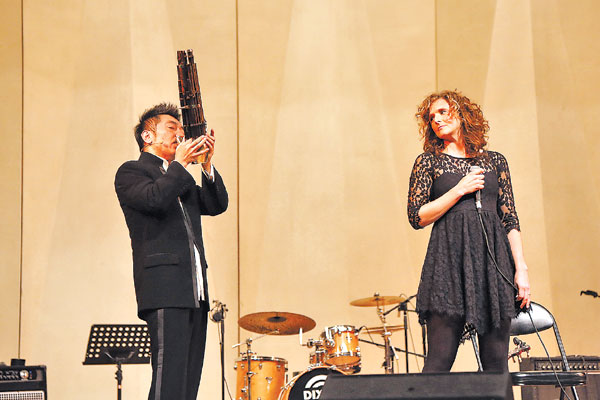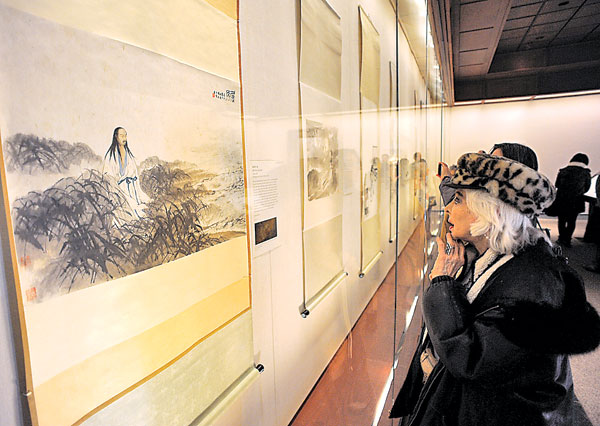
 |
|
Wu Tong plays the sheng for American singer Abigail Washburn. Wu Jianping / For China Daily |
When 15 museum directors from the United States met with their Chinese counterparts in Beijing recently, director of the Asian Art Museum of San Francisco Jay Xu felt lucky because he understands both sides well.
Having grown up in China and lived in the US for the last 22 years, Xu says that although the modes of operation are different between museums in China and the US, their missions are common and both sides can learn from the other.
"China is leading the way in the speed of building museums. Nobody is building as many museums as China is now," he says. "Managing these museums and personnel training is extremely important, and that's one of the areas where US museums could offer assistance and help."
At the same time, Xu believes the US museum directors can also learn a lot from China, especially the Chinese museums' adoption of cutting-edge technology and innovative ways to connect art to life.
Xu gives the example of the Shanghai Museum's use of motion detectors at exhibits of ancient Chinese scroll paintings. When someone looks at one section of the scroll, the detector will sense the movement and turn on the light, and, when one moves away, that light would dim while others turn on.
"The Shanghai Museum is the first in the world to use such technology to help viewers to look at the scroll paintings and also preserve the works," Xu says.
The US museum directors were in China to discuss how to engender more cultural exchanges. The two countries have collaborated on many Chinese art projects in recent years, like the Metropolitan Museum of Art's retrospective of works by Fu Baoshi and the Asia Society Museum's exhibition of Wu Guanzhong. But Fan Di'an, director of the National Art Museum of China, contends that, in terms of contemporary art, Chinese and US museums still have much to do together.
"Chinese and American contemporary art are very active in commercial events, such as auctions and expositions, but not so much in public museums," he says. "That's something we should pay more attention to."
The panel discussion, a part of the second US-China Forum on the Arts and Culture, has brought directors from major museums of both countries, including the National Museum of China, the Guangdong Art Museum and the Whitney Museum of American Art.
The forum is organized by the Asia Society of the US and the Chinese People's Association for Friendship with Foreign Countries. The first forum was held in 2011 and brought a group of American cultural icons from the worlds of film, music, dance, the arts, literature and nonfiction writing to Beijing for four days of panel discussions, screenings and concerts.
Orville Schell, the Arthur Ross director of the Asia Society's Center on US-China Relations, says the society has engaged the forum because this is a "critical moment in this most important of international relationships".
"Both Americans and Chinese urgently need to find new ways to enjoy themselves and relax in more collaborative efforts," he says.
Besides the panel discussion of museum directors, the forum also presented the second Musical Dialogue concert, a collaboration between Chinese and US musicians.
It was a special concert where Michael Tilson Thomas, musical director of the San Francisco Symphony, performed with guqin (seven-stringed zither) player Chen Leiji. The program also included Abigail Washburn, who played her banjo to have a dialogue with guzheng (21-stringed zither) player Wu Fei, with Wu Tong playing the sheng (mouth organ) as the backdrop for visual artist Clifford Ross' work.
"We hope that these events will continue to serve as a bridge of partnership between the US and China," Schell says.
muqian@chinadaily.com.cn
 |
|
The retrospective of Fu Baoshi's works attracts viewers in the Metropolitan Museum of Art in New York. Stan Honda / Agence France-Presse |